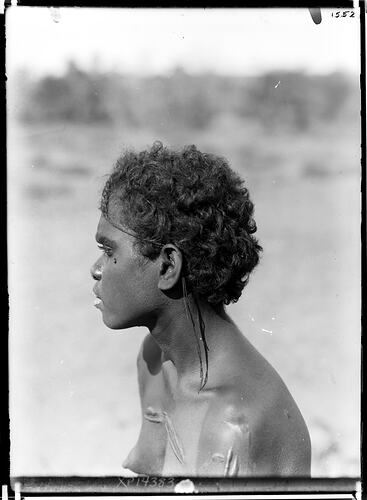Summary
Portrait of a young Jingili woman showing the method of plaiting the hair. All Arrernte must periodically give up their hair to others who stand in a certain relationship - a woman, for example, to her son-in-law for a waist-belt, or a man to his mother-in-law for a head-ring. The Warumungu people, and the Jingili further north, also follow this practice, but the girls, when their hair is long enough, plait it and wind the plaits around the head, sometimes ornamenting the ends with fur string. Baldwin Spencer and Frank Gillen met at the end of the Horn Expedition at Alice Springs in July of 1894. This meeting and subsequent friendship resulted in a number of collaborative field expeditions and publications. In 1901 Spencer and Gillen set out on what would be their greatest collaboration and final expedition together, to study the Arrernte people and other groups between the Arrernte and the north coast. Spencer and Gillen were intent upon obtaining the most detailed as possible records of the societies they studied, and to achieve this, they used the most advanced technology available to them. The two men became pioneers not only of photography but also of sound and film recording. Their diaries make numerous references to the use of this equipment and the challenges they met in obtaining good results. The cameras that they used had developed sufficiently to record action sequences as they occurred. Spencer's desire was to take photographs of people engaged in the activities of daily life, while remaining as unconscious as possible about the presence of the camera.
Physical Description
Silver gelatin emulsion. Half plate.
More Information
-
Object/Medium
Glass plate
-
Individuals Identified
Unrecorded
-
Photographer
-
Cultural Groups
-
Locality
Powell Creek, Central Australia, Northern Territory, Australia
-
Date Produced
-
Date Collected
-
Keywords
-
References
[Book] Batty, Philip, et al. 2005. The Photographs of Baldwin Spencer.
-
Collection Names
-
Type of item
-
Discipline
-
Category
-
Collecting Areas
Ethnohistory, Central and Western and South Australian Ethnographic
